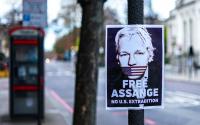On July 18, 2005, the United States and India issue a joint statement, which celebrated the new Strategic Partnership between the two. Three days later, the Chinese government revalued upward the yuan in relation to the U.S. dollar, something which the U.S. Secretary of the Treasury, John Snow, had been requesting for some time, and which he praised effusively. Both represent significant shifts in the world geopolitical structure. The two are more closely linked than the world press has noticed, and neither is quite what it seems.
Both events were hailed in the United States as diplomatic victories for the U.S. Were they? And what makes these events special? India and China together represent half of the world's population. Yet for the entire second half of the twentieth century, when the United States was the dominant power in the world-system, the U.S. never had really good relations with either power. Has this changed?
The China story is in many ways more well-known in the United States, and of greater concern to the U.S. Congress, the U.S. media, and the general public. When the Chinese Communists entered Shanghai in 1949, and then proclaimed the People's Republic of China, the U.S. government regarded this as a great danger to U.S. national interests. Not only was their political ally, Chiang Kai-shek, forced to retreat to Taiwan, but the new Chinese leaders were seen as the forward batallions of world Communism. In 1950, China signed a military alliance with the Soviet Union. When the Korean War started later that year, the United States soon found itself fighting the Chinese on the battlefields, and not too successfully, it should be added.
During the 1950s, China and the United States were unremittingly hostile to each other. Then suddenly in 1960 the world became aware of a split between China and the Soviet Union. This had many causes but one precipitating factor was the fact that the Soviet Union reneged on its pledge to help China acquire nuclear weapons, something China would nonetheless accomplish on its own in 1964. In the decade following this, the U.S. and China began, largely unnoticed, to take parallel positions on many questions, culminating in the spectacular visit of Richard Nixon to Beijing in 1972 to meet Mao Zedong. China and the United States saw mutual advantage in constraining the Soviet Union, and entered into what can be considered to have been a limited alliance.
In the 1980s, China began a major internal economic reorganization, allowing it to participate in the world market as an increasingly important producer and trading partner. By the late 1990s, Chinese economic growth became the big story of the world-economy. This aroused very mixed response in the United States.
On the one hand, China now represented a major zone of potential large profit for U.S. corporations, which had a new and very important outlet for their exports and indeed their investments. In addition, China's increasingly large accumulation of U.S. dollars resulting from the excess of their exports over imports were invested almost exclusively in U.S. treasury bonds, permitting the Bush administration to cover its enormous balance of payments deficit. This deficit was the result of the combination of the Bush tax refunds, the incredible costs of the Iraq war, and the declining level of manufacturing exports. This seemed a good deal to a lot of people in Washington - profits for U.S. corporations, a low interest rate set by the Federal Reserve Board encouraging a high level of consumption in the U.S. and a major housing bubble, which in turn sustained internal U.S. employment levels. And in the geopolitical arena, the U.S. was seeking the essential help of the Chinese in its efforts to restrain North Korean nuclear ambitions.
On the other hand, there were many nay-sayers in the U.S. to any close relation to China. First of all, Chinese exports fostered by the undervaluation of the yuan was said to be responsible for the unabated decline in employment in the U.S. manufacturing sector. Even more important to the militarist segment of the Bush administration was the fact that the Chinese were using this economic growth to invest heavily in a military upgrading which was threatening to make the Chinese a serious world military power in the next twenty years. And when this year the Chinese state corporation CNOOC entered a bid to buy a U.S. oil producer, Unocal, hysteria broke out in the U.S. Congress, with much talk of a long-term threat to U.S. oil supply.
The Bush administration was caught between two sets of supporters, and tried to navigate the waters by concentrating on pressuring the Chinese for an upward evaluation of the yuan. This presumably would improve the prospects of U.S. manufacturing exports, and might in the process create some constraints on the Chinese budget available for military expenditures. And in addition, the U.S. moved to strengthen its links with India, a bit to counterbalance the growing strength of China in the Asian arena.
The story of U.S. relations with India is less well-followed in the U.S. but is no less ambiguous and complex than the Chinese story. When India became independent in 1948, the U.S. in principle saw this as a success story - decolonization of the world's largest colonial territory and a government that permitted normal electoral politics. But India, almost immediately, assumed the role of the world's leading neutral (later to be called non-aligned) power in the Cold War, and the U.S. did not like this one bit. A few years later, Eisenhower's Secretary of State, John Foster Dulles, would make his famous declaration that "neutralism is immoral."
The moral disapprobation of the U.S. did not faze the Indian leadership at all. They persisted in their self-assigned role, indeed expanded it. India was one of the five countries that convened the Afro-Asian conference at Bandung in 1955, and joined with Egypt and Yugoslavia a few years later in establishing the network of non-aligned countries in Asia, Africa, and Latin America. Furthermore, since India was not able to make serious military purchases in the U.S., it made them in the Soviet Union. When there was a brief but significant border war between China and India in 1962, the Soviet Union sided with India, not China. The U.S. began to think of India as a de facto partner of the Soviet Union.
The U.S. meanwhile cultivated a close relationship with Pakistan, which was in rather constant conflict with India over a wide range of issues. India had its first nuclear explosion in 1974, Pakistan in 1987. Neither country signed the Nuclear Non-Proliferation Treaty, and both countries were then the objects of U.S. Congress limitations on U.S. military commitments. Still, it was clear to one and all that the U.S. was allied with Pakistan and not with India. After September 11, U.S. links to Pakistan grew ever stronger. The U.S. now began however to suspect that the reliability of the Pakistani alliance, both short-term and more importantly middle-run, was low, and began to consider India more favorably, especially given the end of the Cold War and therefore of the Soviet menace.
Was then the new Indo-U.S. joint statement a victory for U.S. diplomacy? In it, the U.S. for the very first time legitimated India's role as a nuclear power, by promising India that it "will work to achieve full civil nuclear energy cooperation with India as it realizes its goals of promoting nuclear power and achieving energy security." This of course undermined enormously the already weak position of the U.S. in opposing Iranian nuclear ambitions, since what India has received from the U.S. is precisely what Iran has been claiming is its right, "full civil nuclear energy."
And in return, what did the U.S. get? - a promise "to combat terrorism relentlessly." Since India was already doing this, it wasn't very much. Meanwhile, India is maintaining its close relations with Iran and Russia, and even (on paper) a strategic alliance with China. More importantly, India is proceeding with Project Seabird, aimed at turning it into the major military power in the Indian Ocean. This does not make the Chinese too happy, to be sure, but it shouldn't make the U.S. too happy either, since at the moment, it is the U.S. that is the major military power in the Indian Ocean.
As for China's upward reevaluation of the yuan, it was a mere 2.1. percent, and the Chinese seem to want to stay there for the moment. Far more important is the fact that the yuan is no longer pegged to the U.S. dollar but to a basket of currencies. This means the end of the guarantee that the Chinese will sustain the U.S. balance of payments deficit. A stronger yuan will make it cheaper for the Chinese to buy U.S. oil companies. The revaluation will scarcely matter in terms of U.S. manufacturing exports. But it will matter much in the maintenance of the U.S. housing bubble. When the interest rates rise enough, the financial crisis of the U.S. government may begin to seem severe to the U.S. Congress, and its willingness to continue the mad level of governmental expenditures on war and tax refunds will come into acute question.
Bottom line of all of this: India has become legitimated as a world military player, and China as a world financial player. The U.S. has gotten paper gains in return for both recognitions, not worth the paper they are written on.






